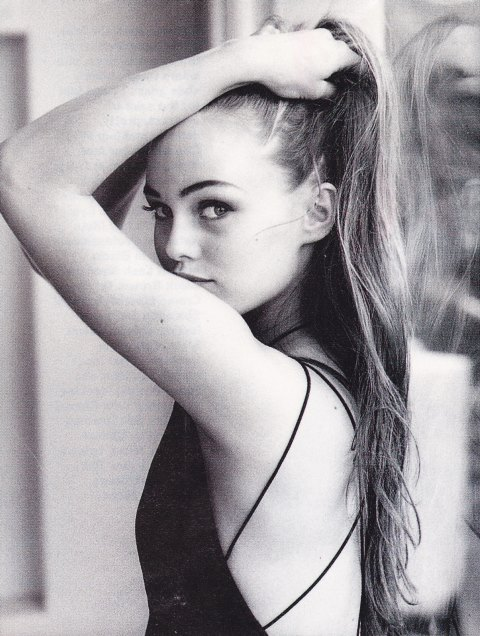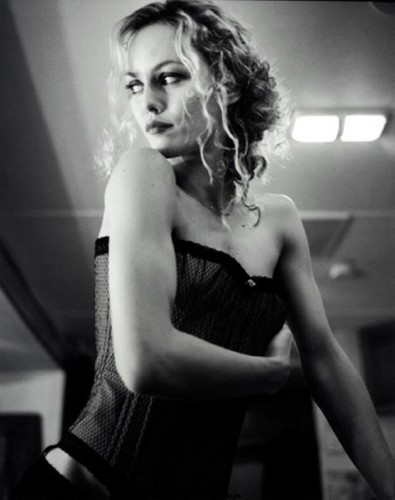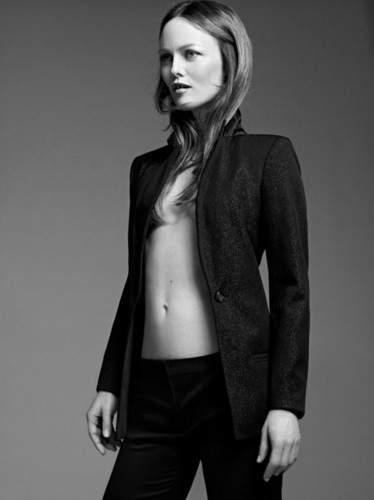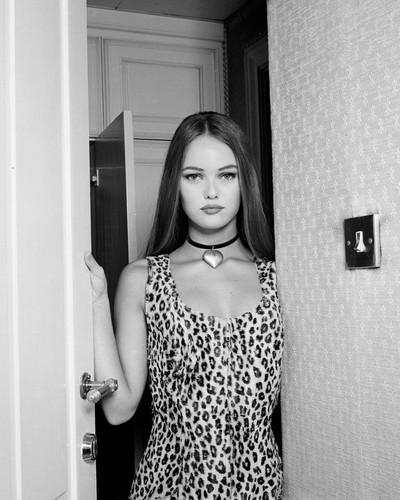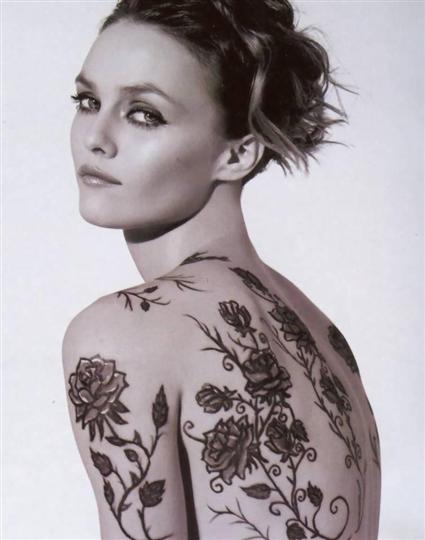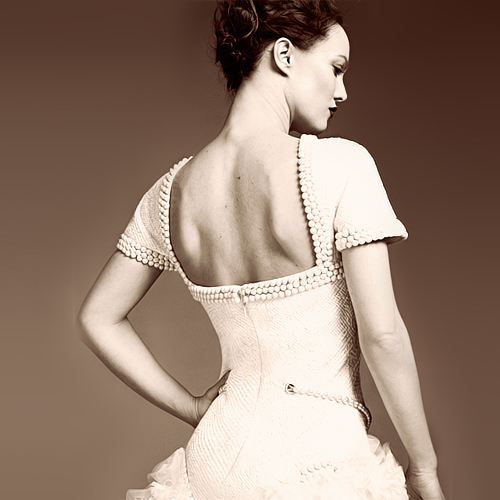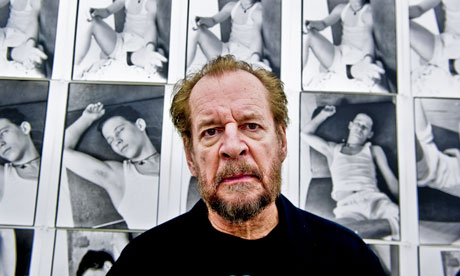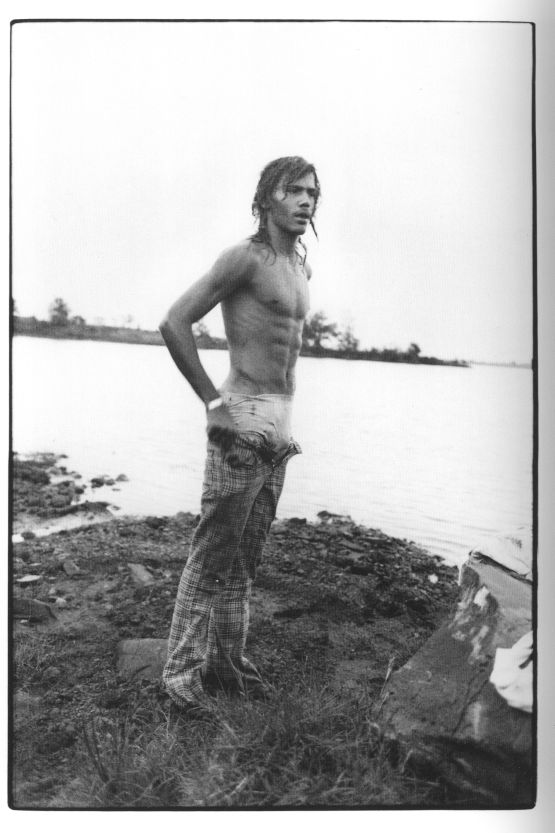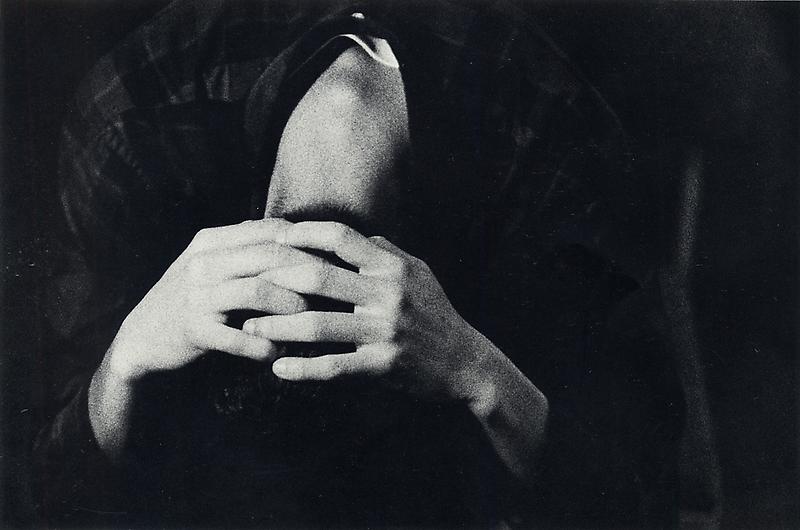
Manuel Puig
(1932 - 1990)

Argentine writer and motion-picture scriptwriter, who gained international fame with the publication of Kiss of the Spider Woman(1976), a dialogue of seduction and manipulation, which was also adapted into a movie and a musical. The story, set in a small cell in the Villa Devoto prison in Buenos Aires, depicts two prisoners – one a young political radical, the other a middle-aged homosexual. At first they have nothing in common, but eventually they develop a strong relationship through retelling romantic plots of old movies. In total, Puig wrote eight novels. He died at the age of fifty-seven.
![]()
.jpg)
"How they spoiled me too much as a kid, and that's why I'm the way I am, how I was tied to my mother's apron strings and now I'm this way, and how a person can always straighten out though, and what I really need is a woman, because woman is the best there is." (from Kiss of the Spider Woman)
 |
| García Márquez and Manuel Puig |
Juan Manuel Puig was born in General Villegas, in the remote Argentine pampas, the first child of María Elena Delledonne and Baldomero Puig. His father tried for success in the livestock and dairy business but failed. However, he struggled hard to build up capital and achieve middle-class status. Puig spent his childhood in Villegas and received there his elementary education. As young boy he used films as an escape from his environment – he liked to dress up as a girl and at school he was assaulted. "I grew up on the pampa in a bad dream, or rather a bad western," he once said. Later in life he had a video library of some 3,000 films. In 1946 Puig moved to Buenos Aires, where he attended US boarding school; he had learned English from films. Puig first studied architecture and changed to philosophy in 1951 at the University of Buenos Aires.
In 1955 Puig went to Rome after receiving a scholarship to study film directing and film technique with Vittorio De Sica and Cesare Zavattini at the Centro Sperimentale di Cinematografia. After a period he realized that film making at the commercial Cinecittà was not to his tastes. Disappointed he traveled to Paris and London, earning his living as a teacher, and dishwasher. In 1959 he lived in Stockholm and then returned to his home country. From 1957 to 1961 Puig worked an assistant film director and translator of subtitles in Rome, Paris, and Buenos Aires. During this time he had begun to write film scripts. While working for Air France from 1963 to 1967, he moved to New York City to see Broadway musicals. Later he worked as a lecturer at Columbia University, New York. Puig returned to Buenos Aires in 1967.
In 1973-75 Puig lived in Brazil, then in New York (1976-80). He did not stay in Argentina many years. Never a Peronist and at odds with the Latino tradition of machismo, he felt the atmosphere of his home country oppressing. When Argentina's dictator Juan Perón died in office in 1974, and was succeeded by his third wife Isabel Péron, Puig became even more critical with the current policy. Due to Isabelita Perón's personal intervention, he had received no royalties for the film of Heartbreak Tango, and his works were attacked in the press. In the 1980s Puig lived in New York and Rio de Janeiro. His play, El misterio del ramo de rosas (1987, Mystery of the Rose Bouquet) was produced in a London theatre in 1987, but a fire in the theatre ended its performances. After spending years ''in an unsuccessful search for a good husband," he settled in 1989 in Cuernavaca, Mexico. Puig died in Cuernavaca on July 22, 1990.
Puig translated most of his works into English and also wrote in that language. His sevaral awards include the Curzio Malaparte Prize, which he received in 1966 and San Sebastian Festival Jury Prize in 1978 .
![]()

"It's just a romance.
But it's so beautiful."
(from the film Kiss of the Spider Woman)

Puig's first novel, the semi-autobiographical La traición de Rita Hayworth (1968, Betrayed by Rita Hayworth), portrayed the realities of Argentine life. Although there is no specific social criticism, the tone of the novel was an indirect comment on the years in which the Argentine populist politician Juan Perón was climbing to power. The protagonist is a young boy, who escapes his boredom by fantasizing about the lives of the stars he has seen in motion pictures. "At another level, Betrayed is a record of the oral languages spoken by a very definite segment of the Argentinean people during a period of the country's history. If the emotional and even the imaginative alienation of the characters is shown through their way of elaborating fables out of books or movies, their everyday speech demonstrates how deep the roots of that alienation have gone, because it is a tissue in which is imbedded the contemporary language of serialized novels, popular biographies, soap operas, movie subtitles, plus the rhetoric of the politicians and the pseudo-intellectual utterances of journalists." (from World Authors 1975-1980, ed. by Vineta Colby, 1985) Boquitas pintadas (1969, Heartbreak Tango) was also set in a fictive small town, Colonel Vallejos, where illusions and reality collide. Puig used the form of romance novels, added in letters, newspaper clippings, excerpts from diaries, police reports, and other things. All the material is tied together with narrative tricks inspired by movies.
Sangre de amor correspondido (1982, Blood of Requited Love) focused on the later experiences of two teenage lovers, Maria, a young woman, and Josemar, a construction worker. They spend one night together in a hotel, but Josemar doesn't tell Maria that he is going to abandon her that night. Like Kiss of the Spider Woman, Maldición eterna a quien lea estas páginas (1980, Eternal Curse on Readers of These Pages) was built on dialogue. Two cultures and opposites meet: Mr. Ramirez, an Argentine invalid, and Larry, a writer who is paid to push his wheelchair. In their search for a common language like characters in a Beckett play, Ramirez tells how he knows what nervous breakdown, depression, euphoria signify, but he doesn't know what these words mean. "But maybe I haven't experienced them lately, so I understand them only up to a point..."
Puig was a pessimistic observer of the human race – several of his characters die or live their lives totally disillusioned like Toto, the child-protagonist of Betrayed by Rita Hayworth, or Molina, who is immersed in the fantasy world of the movies, and killed by Valentin's friends. "Of all the writers I have known, the one who seemed least interested in literature was Manuel Puig (1932-90),"Mario Vargas Llosa wrote in The New York Times (August 13, 2000). "He never talked about authors or books, and when a literary topic came up in conversation he would look bored and change the subject." Because Puig's novels explored sexuality and he did not hide his sexual orientation, in his own country he was much criticized for his controversial stand. Puig had a number of relationships. According to Suzanne Jill Levine's biography, Puig's homosexual "conquests'' included the actors Stanley Baker and Yul Brynner.
During his career Puig suffered many disappointments, among others the "massacre" of the off-Broadway musical version of Kiss of the Spider Woman. Also the conservative film version, directed by Hector Babenco, starring William Hurt, Raul Julia, and Sonia Braga, failed to capture the spirit of the novel. According to some sources, Hurt's part was originally offered to Burt Lancaster, but he had to withdraw because of a heart operation. "La Hurt is so bad she probably will win an Oscar," Puig himself said. He started his book with the classic horror movie Cat People by Jacques Tourneur (1942), a poetical film about double life, sexuality, and an old curse. Schrader and Babenco invented purely imaginary films to intervene with the narrative. Some critics considered John Hurt's performance as Molina artificial, but he won a Best Actor Oscar. Molina is a homosexual. He is accused of an ugly crime – child molestation. The warden has offered Molina a reward if he can get his cellmate Valentin to reveal the secrets of his companions. Eventually the men make love.
![]()

For further reading: World Authors 1975-1980, ed. by Vineta Colby (1985); Suspended Fictions by Lucille Kert (1987); El Discurso utópico de la sexualided en Manuel Puig by Elías Muñoz (1987); The Necessary Dream by Pamela Bacarisse (1988); Impossible Choices by Pamela Bacarisse (1993); 'Manuel Puig' by Pamela Bacarisse, in Encyclopedia of Latin American Literature, ed. by Verity Smith (1997); Eminent Maricones: Arenas, Lorca, Puig, and Me by Jaime Manrique (1999); Manuel Puig and the Spider Woman: His Life and Fictions by Suzanne Jill Levine (2000); Juan Carlos Onetti, Manuel Puig and Luisa Valenzuela: Marginality and Gender by Linda Craig (2005); Sub-versions of the Archive: Manuel Puig's and Severo Sarduy's Alternative Identities by Carlos Riobó (2010)

Selected works:
- La traición de Rita Haywort, 1968- Betrayed by Rita Hayworth (translated by Suzanne Jill Levine, 1971)
- The Buenos Aires Affair, 1968 (translated by Suzanne Jill Levine)- The Buenos Aires Affair: novela political (Buenos Aires: Editorial Sudamericana, 1973)
- Boquitas pintadas, 1969- Heartbreak Tango: A Serial (translated by Suzanne J. Levine, 1973)- film 1974, screenplay by M. Puig and Torre Nilsson, starring Marta Gonzales, Alfredo Alcón, Marlina Ross. The film dealt with a group of friends over the years.
- El beso de la mujer araña, 1976- Kiss of the Spider Woman (translated by Thomas Colchie, 1979) / Kiss of the Spider Woman and Two Other Plays (translated by Allan Baker and Ronald Christ, 1994)- film 1985, dir. by Hector Babenco, screenplay by Leonard Schrader, starring William Hurt, Raul Julia, Sonia Braga. "Well-intentioned picture, on which director Hector Babenco (Pixote) spent four obsessive years, is one long false note. Leonard Schrader's script is calculated for performance rather than content, and for immediate impact so that we forget the overall picture is vague. We never sufficiently get into the heads of the characters so that we at least can understand why they committed the acts that got them imprisoned."(Danny Peary in Guide for the Film Fanatic, 1986)
- Pubis angelical, 1979- Pubis Angelical: A Novel (translated by Elena Brunet, 1986)
- Maldición eterna a quien lea estas páginas, 1980- Eternal Curse on the Readers of These Pages (written first in English; tr. 1982)
- Sangre de amor correspondido, 1982- Blood of Requited Love (translated by Jan L. Grayson, 1984)
- Bajo un manto de estrellas: pieza en dos actos, 1983 (play)- Under a Mantle of Stars: A Play in Two Acts (translated by Ronald Christ, 1985)
- El beso de la mujer araña: adaptación escénica realizada por el autor, 1983 (play)- Kiss of the Spider Woman (translated by Michael Feingold, in Drama Contemporary, 1986; Allan Baker, 1987)
- La cara de villano; Recuerdos de Tijuana, 1985 (screenplays)
- El misterio del ramo de rosas, 1987 (play)- Mystery of the Rose Bouquet (translated by Allan Baker, 1988)
- Cae la noche tropical, 1988- Tropical Night Falling (translated by Suzanne Jill Levine, 1991)
- Buenos Aires, cuándo será el día que me quieras: conversaciones con Manuel Puig, 1992 (with Armando Almada Roche)
- Estertores de una década, Nueva York ’78; seguido de Bye-bye, Babilonia: crónicas de Nueva York, Londres y París, publicadas en Siete días ilustrados, 1969-1970, 1993
- Materiales iniciales para La traición de Rita Hayworth, 1996 (edited by José Amícola)
- La tajada; Gardel, uma lembrança, 1998
- Triste golondrina macho; Amor del bueno; Muy señor mío, 1998 (edited by Graciela Goldchluk and Julia Romero)
- Los 7 pecados tropicales, 2004
- Un destino melodramático: argumentos, 2004
- Querida familia, 2005- (edited by Graciela Goldchluk)
- Puig por Puig: imágenes de un escritor, 2006 (edited by Julia Romero)
http://www.kirjasto.sci.fi/mpuig.htm

.jpg)







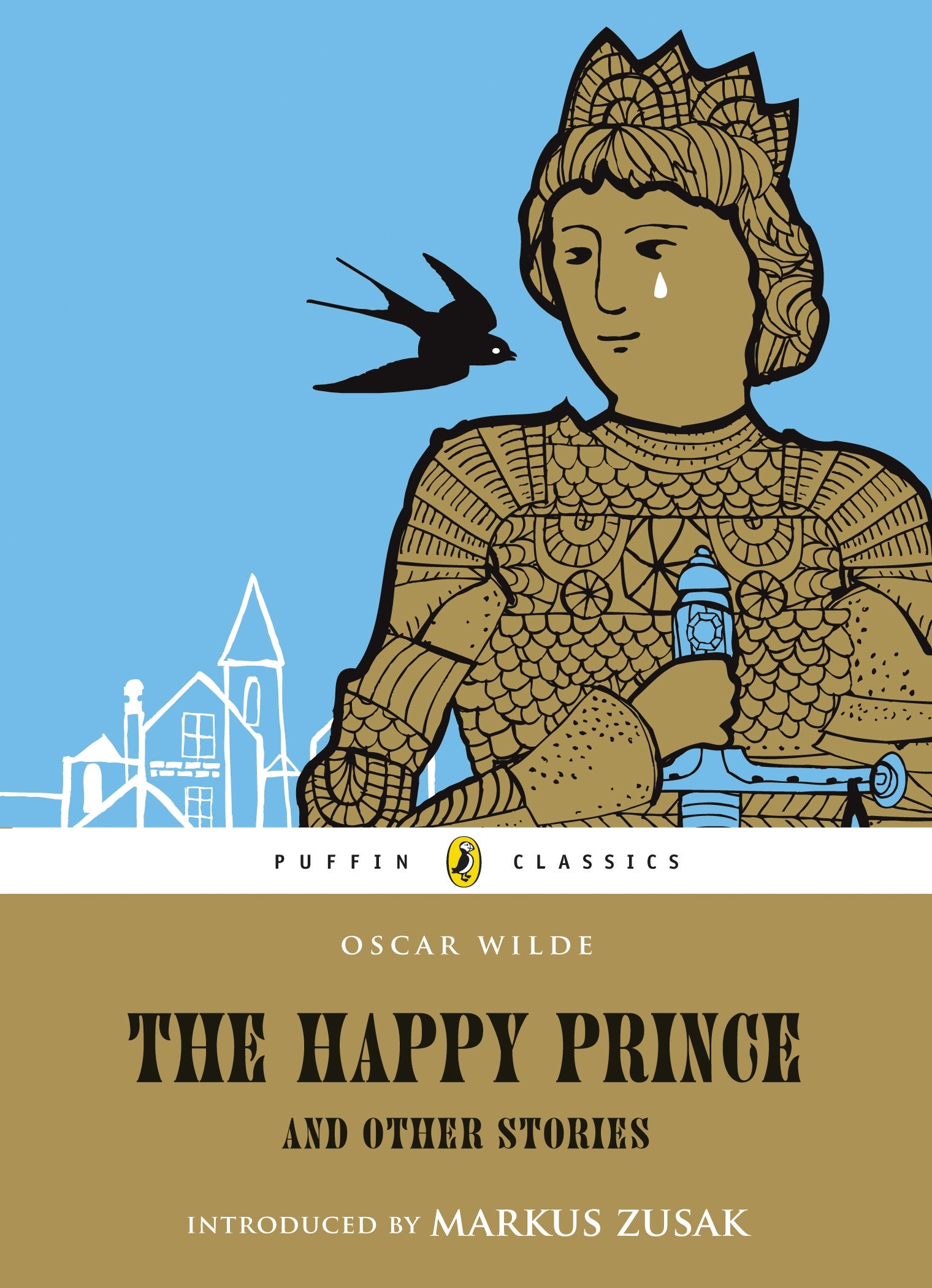






 This is my first memory: I'm taking a shower with one of my young aunts and I'm reaching for her pubis. She giggles and swirls around me. I'm standing on my own, but I don't talk yet. The bathroom where we're showering is the only place in our house I vaguely remember. The white-washed walls are damp, streaked with lichen growing around the edges of the cement floor. The house is in the town of Ciénaga, which means swamp. I know we lived in that house for the first two years of my life because of surviving telegrams sent to our house on Nuevo Callejón for my first two birthdays.
This is my first memory: I'm taking a shower with one of my young aunts and I'm reaching for her pubis. She giggles and swirls around me. I'm standing on my own, but I don't talk yet. The bathroom where we're showering is the only place in our house I vaguely remember. The white-washed walls are damp, streaked with lichen growing around the edges of the cement floor. The house is in the town of Ciénaga, which means swamp. I know we lived in that house for the first two years of my life because of surviving telegrams sent to our house on Nuevo Callejón for my first two birthdays.



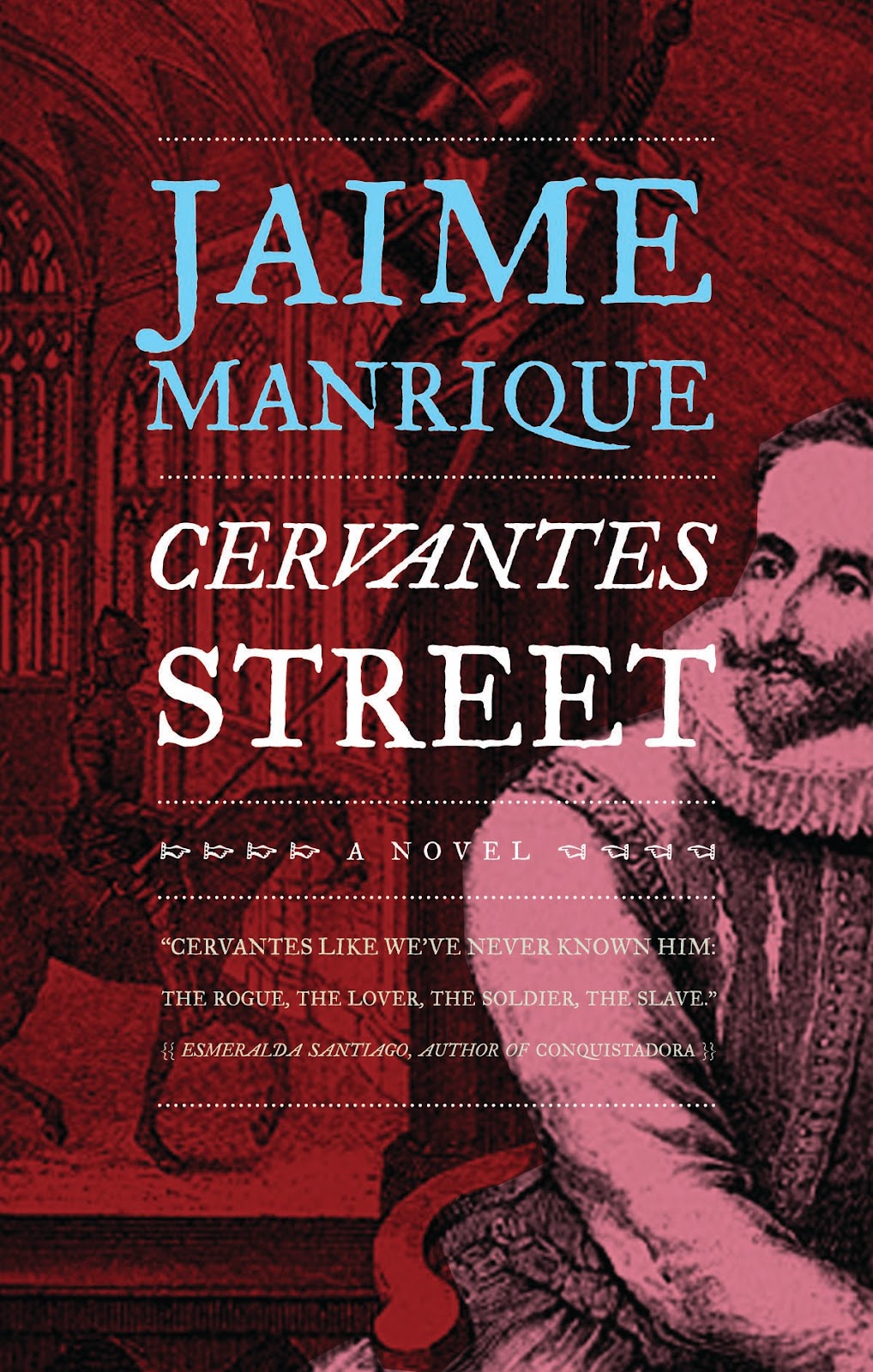




















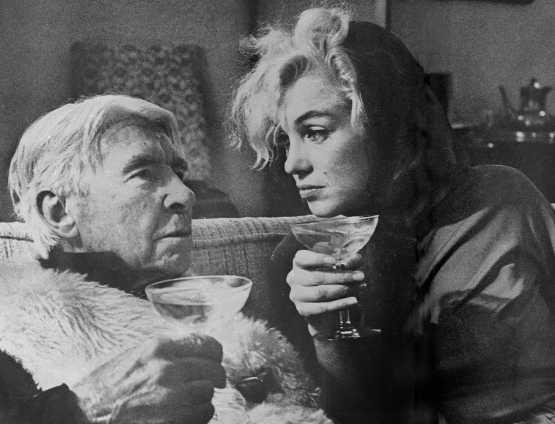






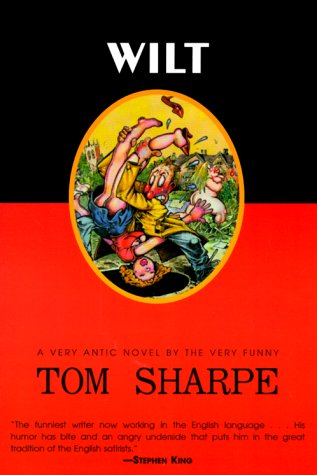

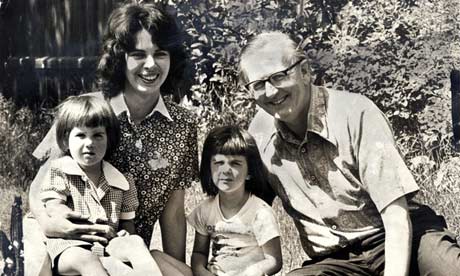




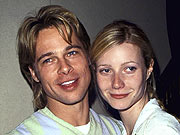

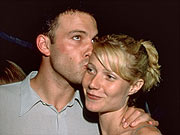





































































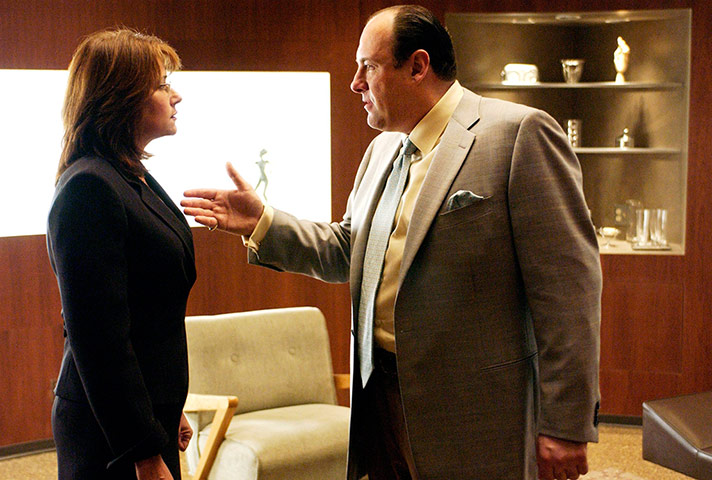





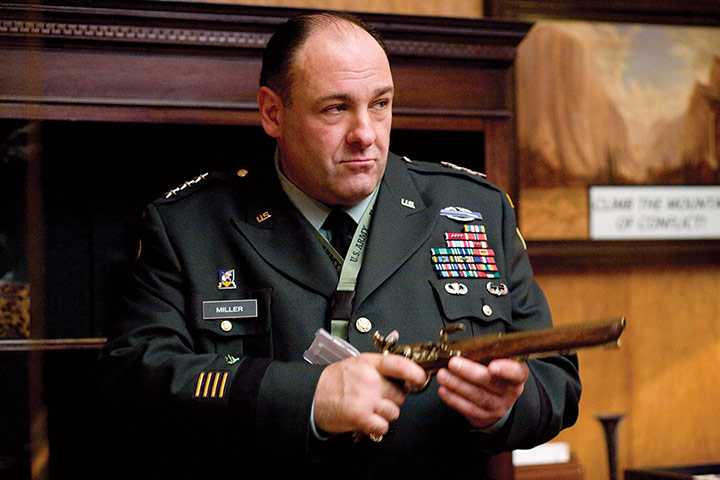
















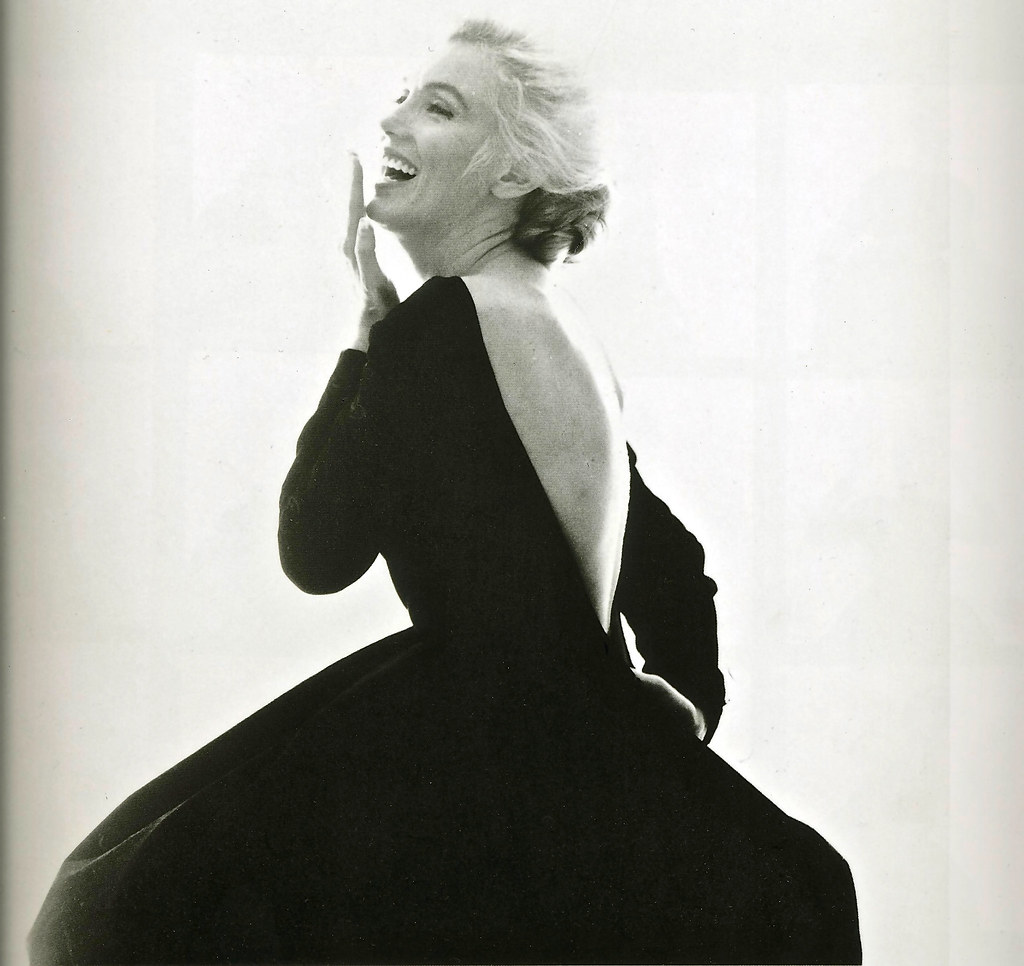
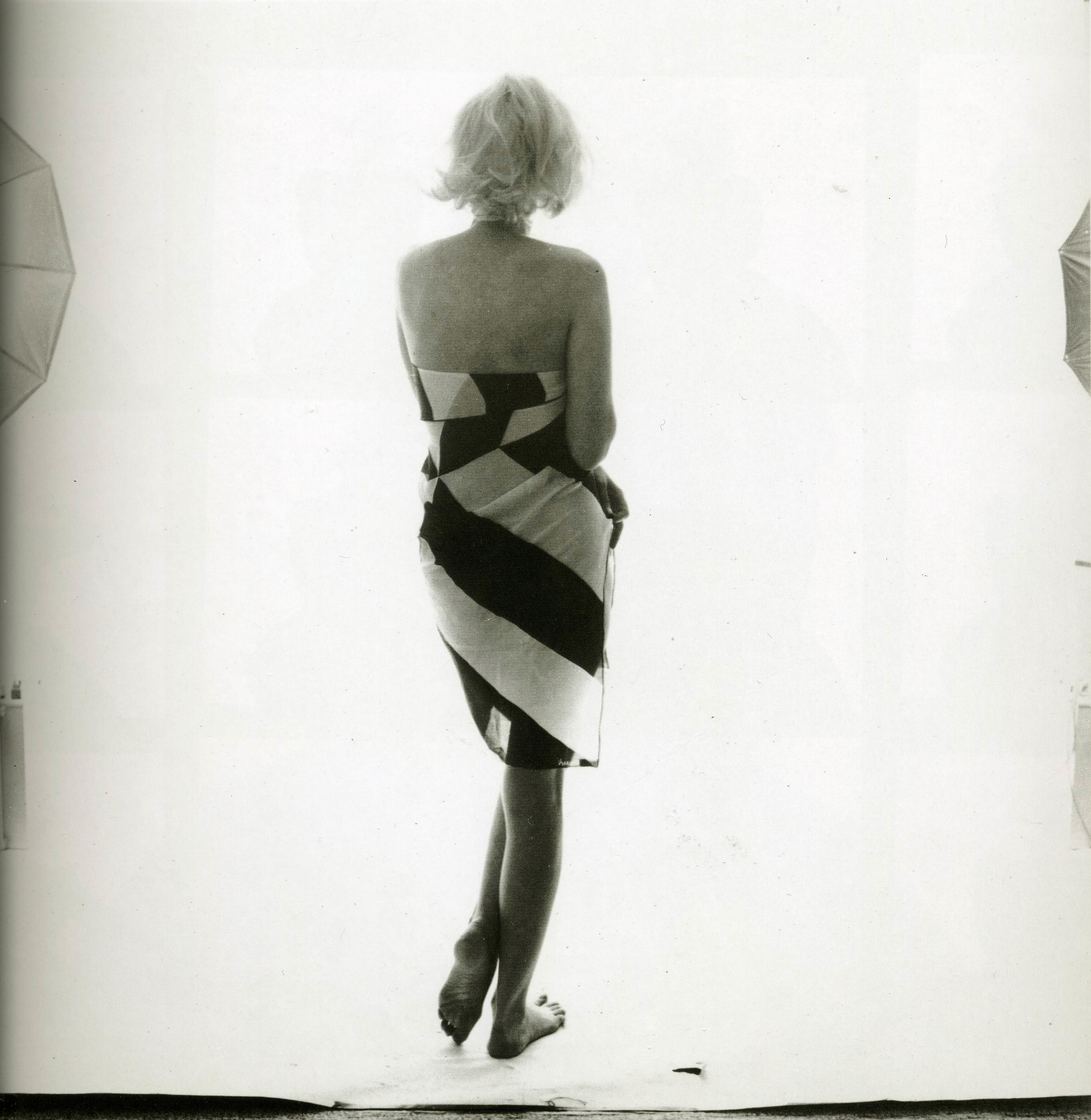














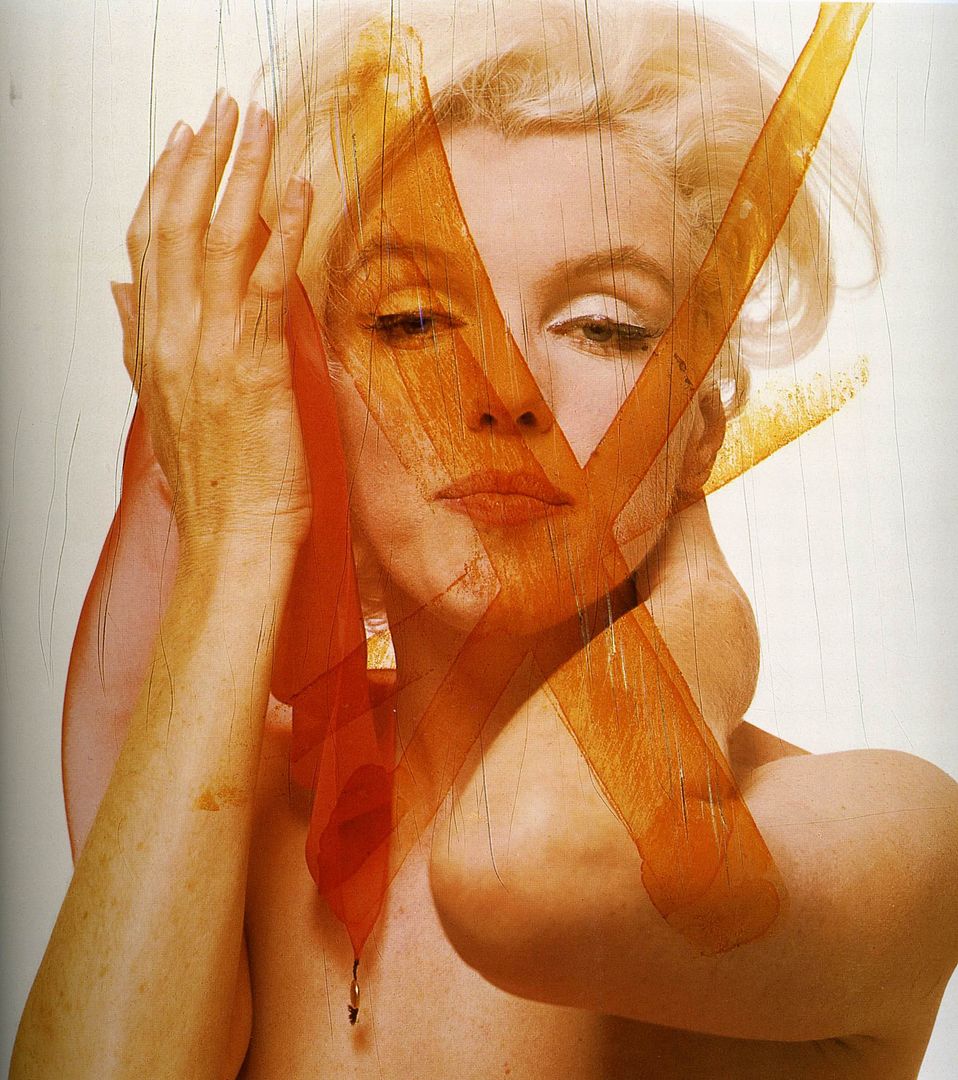

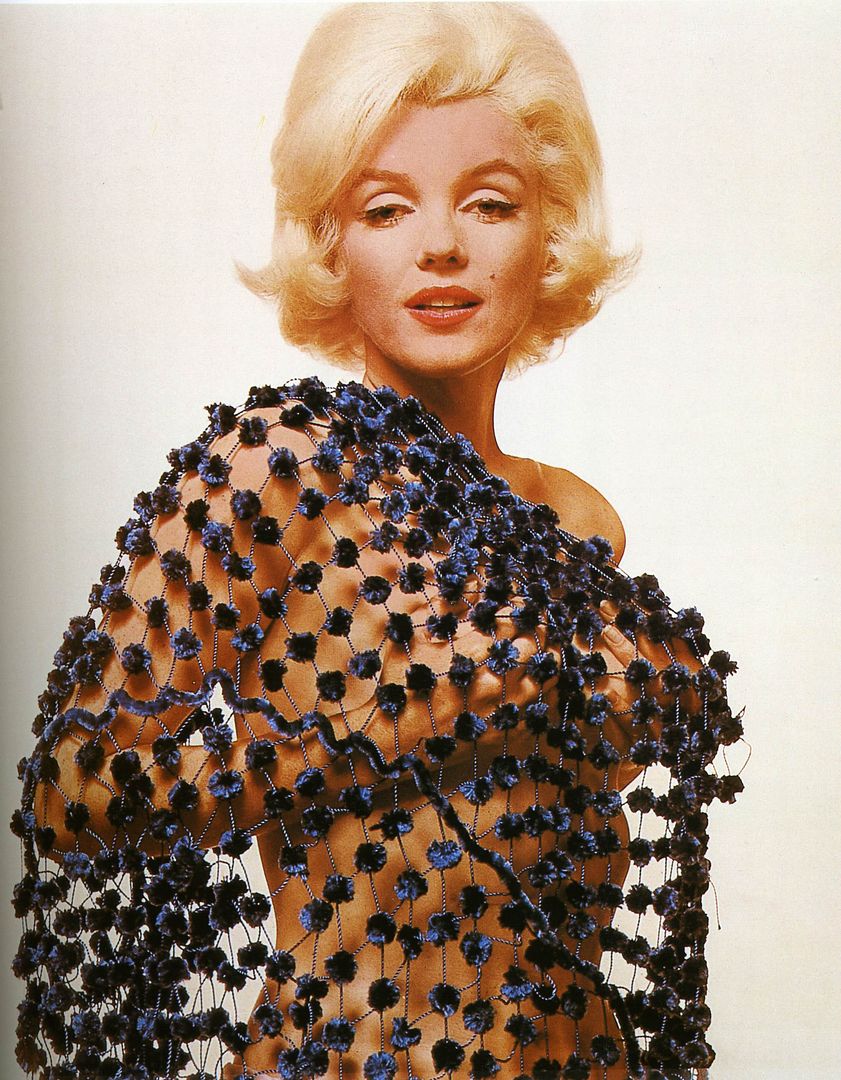
.jpg)








